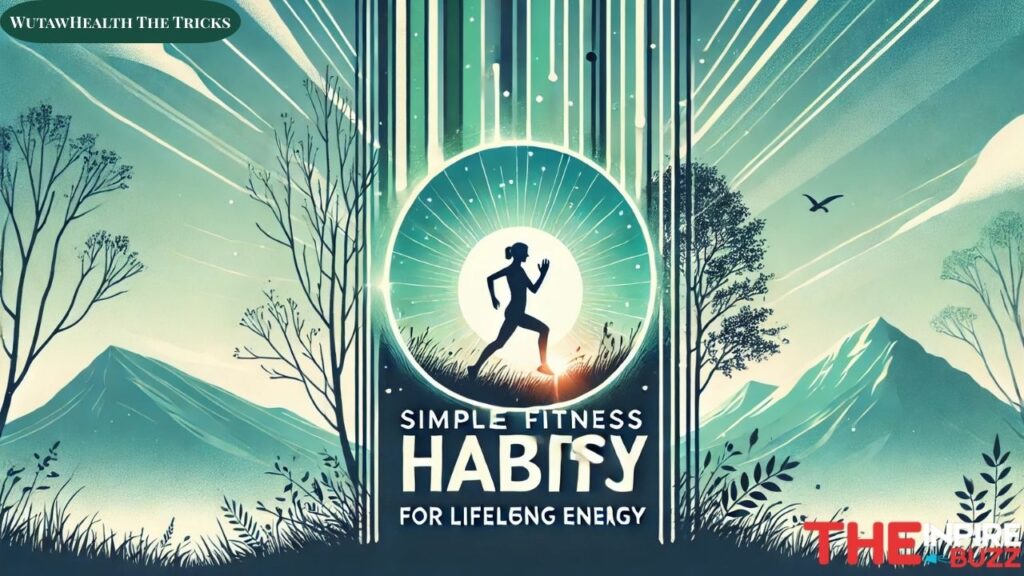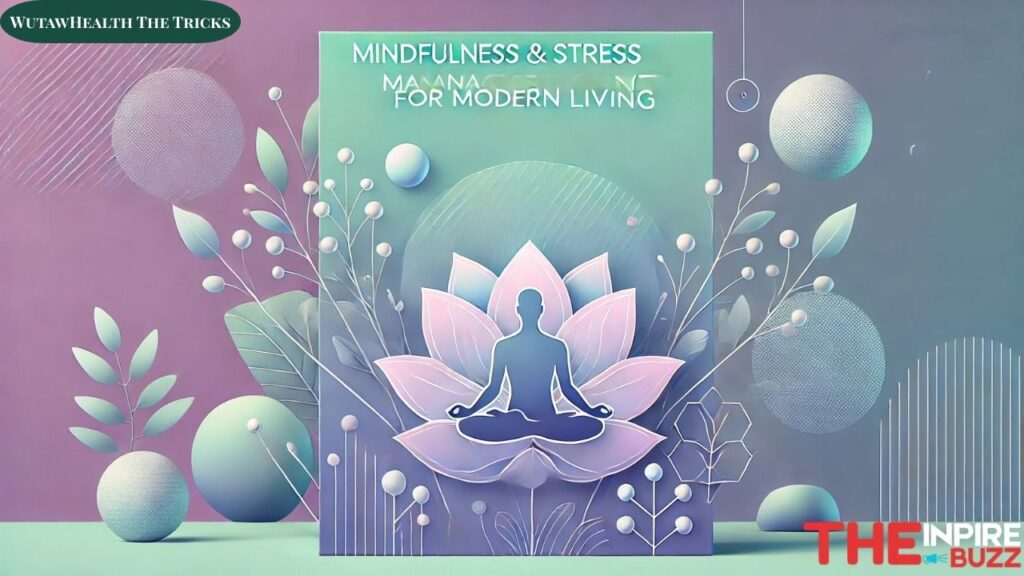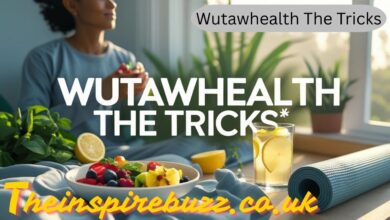WutawHealth The Tricks Your Complete Guide to Sustainable Wellness

Introduction to WutawHealth
When someone first discovers wutawhealth the tricks, they often wonder what makes this approach different from countless other health programs flooding the market today. The answer lies in its refreshingly simple philosophy: sustainable wellness doesn’t require dramatic lifestyle overhauls or expensive equipment.
Definition and Core Philosophy
WutawHealth represents a holistic approach to sustainable health that prioritizes small, manageable lifestyle changes over drastic transformations. Rather than demanding people completely revolutionize their daily routines overnight, this methodology focuses on building lasting habits through gradual, thoughtful adjustments.
The core philosophy centers around three fundamental principles: sustainability, accessibility, and personalization. Every recommendation considers whether an average person can realistically maintain these changes for months and years, not just weeks. This approach recognizes that true wellness isn’t a destination but rather an ongoing journey of self-discovery and gentle improvement.
Why Traditional Health Approaches Often Fail
Most conventional health programs fail because they demand unsustainable extreme changes from participants. People find themselves attempting to exercise two hours daily, eliminate entire food groups, or completely restructure their sleep schedules within the first week. These dramatic shifts often lead to burnout, frustration, and eventual abandonment of healthy habits altogether.
Traditional approaches also tend to focus heavily on quick fixes rather than long-term habit development. They promise rapid results through intensive interventions while neglecting the mental and emotional wellness components that actually sustain healthy behaviors over time. This oversight creates a cycle where people achieve temporary success but struggle to maintain their progress once the initial motivation fades.
The Four Pillars of WutawHealth
Understanding the tricks wutawhealth methodology requires examining its four foundational pillars, each designed to support sustainable wellness through practical, evidence-based strategies.
Nutrition and Dietary Strategies

Balanced Eating Principles
The nutritional foundation emphasizes whole foods over processed options without completely demonizing convenience foods. This balanced perspective recognizes that most people need flexible eating strategies that accommodate real-world constraints like busy schedules, budget limitations, and social situations.
Portion control techniques form another crucial component, but they focus on internal hunger and satiety cues rather than strict calorie counting. Mindful eating practices help people develop a healthier relationship with food by encouraging them to eat slowly, eliminate distractions during meals, and pay attention to how different foods make them feel.
Practical Meal Planning
Simple meal prep strategies make healthy eating more accessible without requiring hours of weekend cooking marathons. The approach suggests preparing versatile base ingredients that can be combined in multiple ways throughout the week, reducing both prep time and food waste.
Budget-friendly healthy options receive special attention since financial constraints often derail good intentions. The methodology provides specific guidance on purchasing nutritious foods without breaking the bank, including seasonal shopping tips, bulk buying strategies, and simple ingredient swaps that boost nutritional value without increasing costs.
Tracking nutritional responses involves paying attention to energy levels, digestion patterns, and mood changes after eating different foods. This personalized approach helps individuals identify which foods serve their bodies best, creating a customized eating plan based on actual results rather than generic recommendations.
Hydration and Supplementation
Daily water intake goals are established based on individual needs rather than universal recommendations. The approach teaches people to monitor their hydration status through simple indicators like urine color and energy levels, adjusting intake accordingly.
Natural supplement alternatives focus on nutrient-dense whole foods before suggesting isolated supplements. When supplementation is necessary, the methodology emphasizes quality, timing, and proper dosing while encouraging consultation with healthcare providers for complex health situations.
Understanding nutritional needs involves learning to read body signals and adjusting food choices based on activity levels, stress periods, and seasonal changes. This dynamic approach prevents the rigid thinking that often undermines long-term dietary success.
Physical Activity and Movement

Exercise Variety and Balance
The physical activity pillar emphasizes variety and balance rather than specialization in any single form of exercise. Cardiovascular training, strength work, and flexibility training each play important roles in overall fitness, but the approach makes them accessible to people with different fitness levels and time constraints.
Recovery periods receive equal importance to active training phases. This perspective helps prevent burnout and injury while teaching people to listen to their bodies and adjust activity levels based on energy, stress, and other life factors.
Accessible Fitness Options
Bodyweight exercises like push-ups, squats, and planks form the foundation of the strength training recommendations because they require no equipment and can be modified for any fitness level. These exercises can be performed anywhere, eliminating common barriers like gym memberships or equipment costs.
Daily walks lasting 20-30 minutes provide cardiovascular benefits while offering mental health advantages through outdoor exposure and stress relief. The approach encourages people to view walking as both transportation and exercise, integrating physical activity into daily routines rather than treating it as a separate obligation.
Home workout routines and equipment-free alternatives ensure that people can maintain their fitness habits regardless of location, weather, or access to facilities. This flexibility proves crucial for long-term adherence, especially during travel or life transitions.
Daily Mobility and Posture
Yoga and stretching routines address the mobility issues that accumulate from modern sedentary lifestyles. Simple movements performed throughout the day can prevent pain and stiffness while improving overall quality of life.
Workplace ergonomics and movement breaks receive specific attention since many people spend significant portions of their days at desks. Small adjustments to workspace setup and regular movement breaks can prevent chronic pain and improve energy levels without requiring major lifestyle changes.
Mental Health and Wellness

Stress Management Techniques
Meditation practices are introduced gradually, starting with just a few minutes of focused breathing rather than demanding hour-long sessions. This approach makes mindfulness accessible to beginners while providing a foundation for deeper practice as comfort and interest develop.
Deep breathing exercises and mindfulness strategies can be practiced anywhere, making them practical tools for managing stress in real-world situations. The methodology teaches several different techniques, allowing people to choose approaches that resonate with their preferences and lifestyle demands.
Emotional Regulation
Building resilience involves developing coping mechanisms for difficult days while maintaining a positive mental outlook during challenging periods. Rather than promoting toxic positivity, the approach acknowledges that difficult emotions are normal and provides healthy ways to process them.
Coping mechanisms focus on practical strategies that can be implemented quickly when stress levels rise. These might include brief walking breaks, journaling exercises, or simple breathing techniques that help regulate the nervous system during overwhelming moments.
Work-Life Balance
Setting boundaries becomes crucial for maintaining mental wellness in today’s connected world. The methodology provides specific strategies for establishing limits around work communication, social obligations, and personal time without damaging professional relationships or social connections.
Time management skills and self-care prioritization help people create space for wellness activities within busy schedules. Rather than demanding major schedule overhauls, the approach identifies small pockets of time that can be optimized for health-supporting activities.
Sleep and Recovery
Quality Sleep Hygiene
Establishing bedtime routines that support quality sleep doesn’t require complex rituals or expensive products. Simple changes like consistent sleep timing, comfortable room temperature, and reduced screen exposure before bed can significantly improve sleep quality.
Creating an optimal sleep environment involves addressing factors like lighting, noise, and comfort within realistic budget constraints. The approach provides specific guidance on making bedrooms more conducive to rest without requiring expensive renovations or equipment.
Managing screen time before bed receives particular attention given the prevalence of electronic device usage in modern life. Practical strategies help people reduce blue light exposure while still accommodating necessary evening activities like reading or light entertainment.
Rest and Recovery Strategies
Understanding sleep cycles helps people optimize their rest by aligning wake times with natural sleep phases when possible. This knowledge can improve morning energy levels and overall sleep satisfaction without requiring major schedule changes.
Power napping techniques provide guidance on using short daytime rests effectively without disrupting nighttime sleep patterns. Recovery strategies between workouts help people maintain consistent exercise habits while avoiding overtraining and burnout.
Implementation Strategies
Learning how to apply tricks wutawhealth principles requires a structured approach that builds momentum gradually while avoiding the overwhelm that derails many wellness attempts.
Starting Your WutawHealth Journey
Assessment and Goal Setting
Current health evaluation involves taking honest inventory of existing habits, energy levels, and wellness challenges without judgment or shame. This assessment creates a realistic starting point for making improvements while identifying areas that need the most attention.
Realistic goal establishment focuses on process goals rather than outcome goals, emphasizing consistent behaviors rather than specific results. This approach reduces frustration while building the habits that naturally lead to desired outcomes over time.
Creating measurable milestones helps track progress without becoming obsessed with daily fluctuations. Weekly or monthly check-ins provide enough data to identify trends while allowing for normal variations in energy, motivation, and life circumstances.
Small, Sustainable Changes
The one habit at a time approach prevents overwhelm while ensuring that new behaviors become truly established before adding additional challenges. This patience-focused methodology may seem slower initially but creates more lasting change than attempting multiple transformations simultaneously.
Building momentum gradually allows people to experience success and build confidence before tackling more challenging aspects of wellness. Early wins create positive associations with healthy behaviors, making continued progress more likely and enjoyable.
Avoiding overwhelming lifestyle overhauls protects against the all-or-nothing thinking that often sabotages long-term success. By making changes incrementally, people can adjust to new routines while maintaining other important aspects of their lives.
Tracking and Monitoring Progress
Response Monitoring
Energy level tracking helps people identify which habits and behaviors support their vitality versus those that drain their resources. This information becomes invaluable for making personalized adjustments to diet, exercise, and lifestyle factors.
Monitoring digestion patterns, sleep quality, and mood provides additional data points for evaluating the effectiveness of different interventions. Rather than relying solely on external measures like weight or appearance, this approach emphasizes how people actually feel and function day-to-day.
Mental clarity assessment helps people recognize the cognitive benefits of healthy lifestyle choices, which often motivate continued adherence more effectively than physical changes alone.
Adjustment Strategies
Regular review of habits ensures that wellness practices continue serving people’s evolving needs and circumstances. Life changes, seasonal variations, and personal growth all influence which strategies work best at different times.
Modifying approaches based on results prevents people from persisting with ineffective strategies out of stubbornness or misplaced loyalty to particular methods. Flexibility in implementation allows for continuous improvement and personalization over time.
Building Support Systems
Community Connections
Finding like-minded individuals creates accountability and encouragement without judgment or competition. Family involvement and online support groups provide different types of social support that can sustain motivation during challenging periods.
Professional guidance becomes valuable when people encounter specific health challenges or want to optimize their approaches beyond basic wellness principles. Knowing when to consult healthcare providers, nutritionists, or trainers prevents minor issues from becoming major obstacles.
Regular health check-ups ensure that wellness efforts align with medical recommendations while catching potential problems early. This professional oversight provides peace of mind and expert guidance when needed.
Common Challenges and Solutions
Overcoming Obstacles
Time Constraints
Efficient workout routines and quick healthy meal options address the most common barrier to maintaining wellness habits: lack of time. The methodology provides specific solutions for people with demanding schedules without compromising effectiveness.
Multitasking strategies help people integrate wellness activities into existing routines rather than requiring separate time blocks. Examples might include walking meetings, desk exercises, or meal prep techniques that save time during busy weekdays.
Motivation and Consistency
Creating accountability systems and reward mechanisms helps maintain momentum during periods of low motivation. These strategies work by making positive behaviors more automatic and enjoyable rather than relying purely on willpower.
Handling setbacks with grace and practical recovery plans prevents minor lapses from becoming major derailments. The methodology normalizes occasional challenges while providing concrete steps for getting back on track quickly.
Troubleshooting Common Issues
Plateau Breaking
Varying exercise routines and adjusting nutritional intake can help people move past stagnant periods in their wellness journey. Rather than drastically increasing intensity, the approach emphasizes strategic modifications that reignite progress.
Reassessing goals ensures that people’s targets remain relevant and motivating as they develop new capabilities and interests. Sometimes apparent plateaus reflect a need for different objectives rather than inadequate effort.
Lifestyle Integration
Travel considerations, social situations, and seasonal adjustments receive specific attention since these circumstances often disrupt established wellness routines. Having flexible strategies for common challenges prevents temporary disruptions from becoming permanent setbacks.
Long-term Success and Maintenance
Creating Lasting Habits
The Science of Habit Formation
Understanding the reality behind the 21-day myth helps people maintain realistic expectations about how long behavior change actually takes. Most habits require several months to become truly automatic, and this timeline varies significantly between individuals and behaviors.
Trigger-routine-reward cycles provide a framework for designing sustainable habits that persist without constant conscious effort. Environmental design supports these cycles by making healthy choices easier while reducing friction around positive behaviors.
Preventing Regression
Regular check-ins and continuous learning prevent people from becoming complacent or drifting away from effective practices. Adapting to life changes ensures that wellness strategies evolve with people’s circumstances rather than becoming outdated obstacles.
Advanced Strategies
Biohacking and Optimization
Understanding personal biorhythms and advanced tracking methods can help people fine-tune their approaches once basic habits are well-established. Personalized nutrition approaches based on individual responses create more sophisticated wellness strategies over time.
Holistic Integration
Mind-body connection awareness, spiritual wellness components, and environmental health factors represent advanced considerations that can deepen people’s wellness practice as they become more experienced and interested in optimization.
Conclusion and Action Steps
Key Takeaways
The most important lesson involves prioritizing sustainability over intensity in all wellness endeavors. This holistic approach to health recognizes that personal customization matters more than following generic recommendations perfectly.
Getting Started Checklist
Initial assessment tools, first week action plans, and support system resources provide concrete next steps for people ready to begin their wellness journey. Rather than overwhelming beginners with every possible strategy, this checklist focuses on the most essential starting points.
Resources for Continued Learning
Recommended reading, useful apps and tools, and professional consultation guidelines support ongoing development without creating dependency on external validation or guidance. The goal involves empowering people to become their own wellness experts over time.
Also Read: Milyom Dairy Products Premium Quality Nutrition for Modern Families



